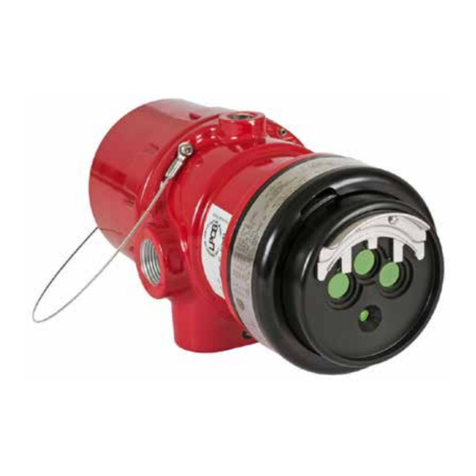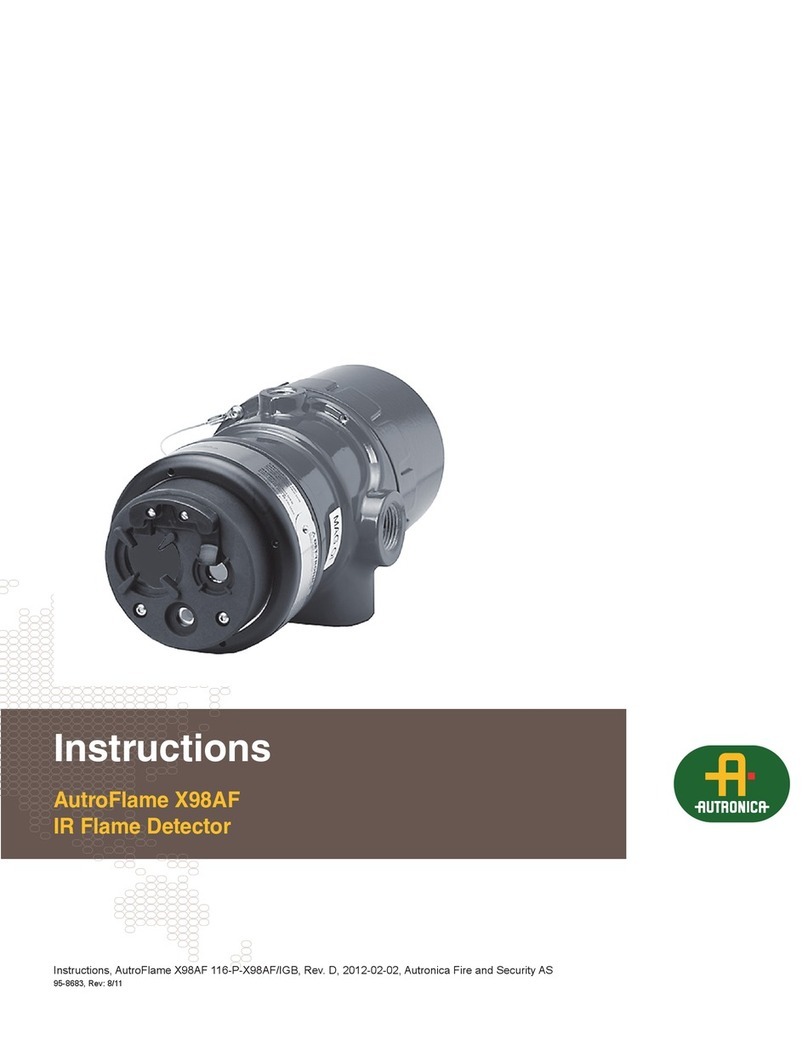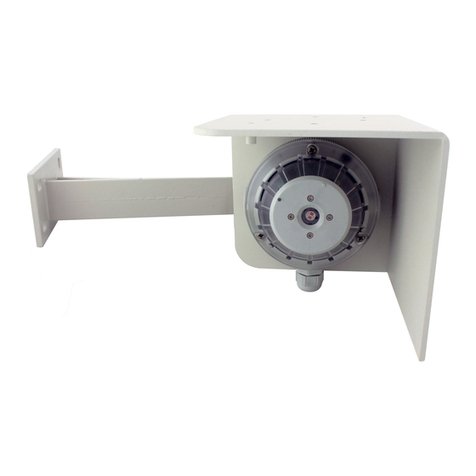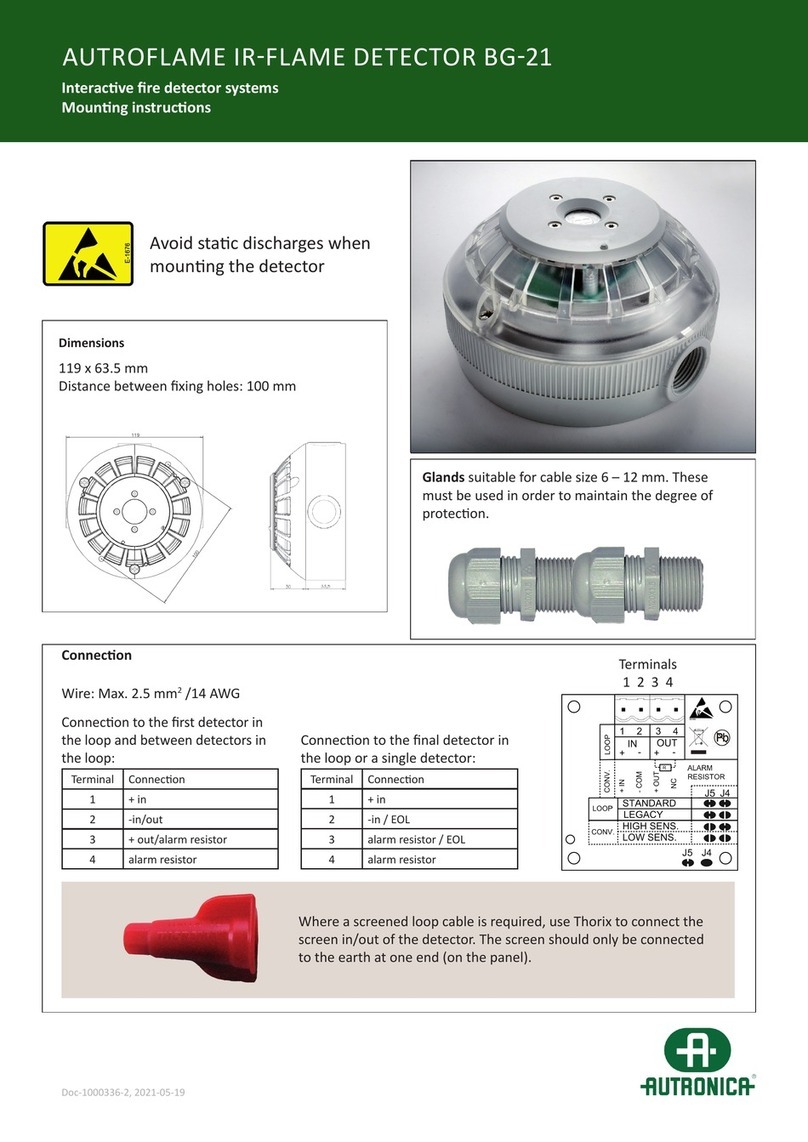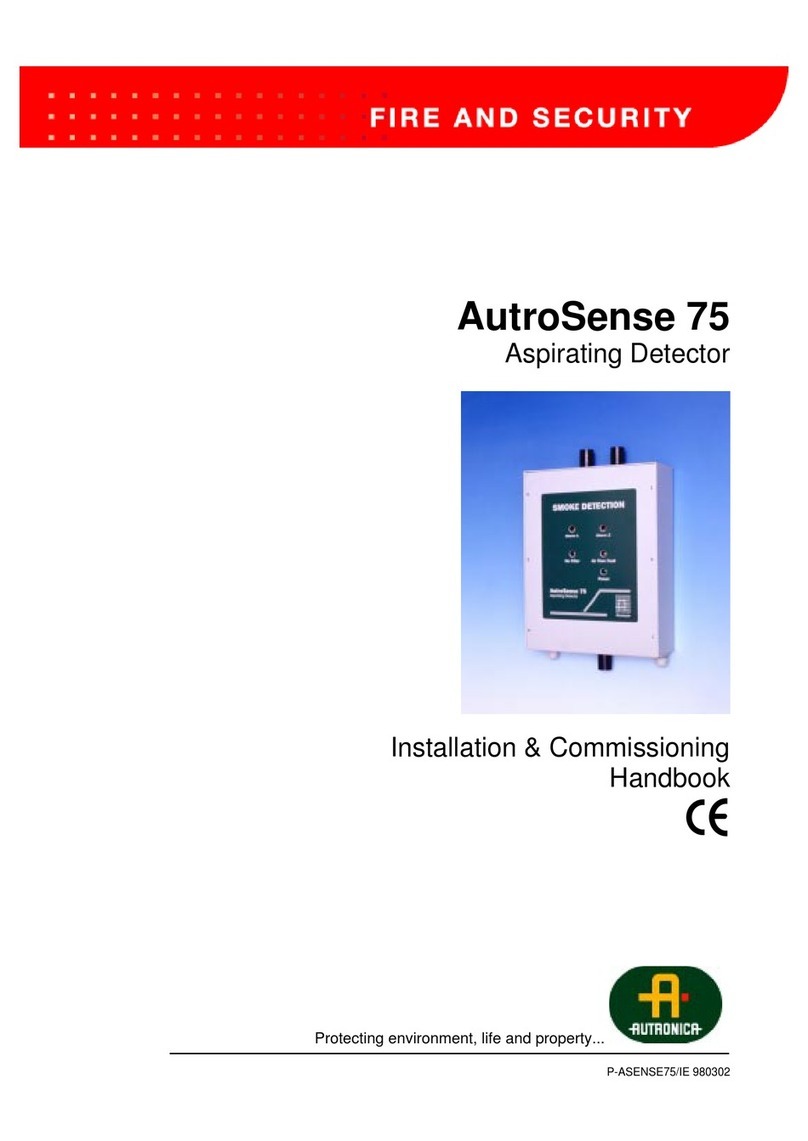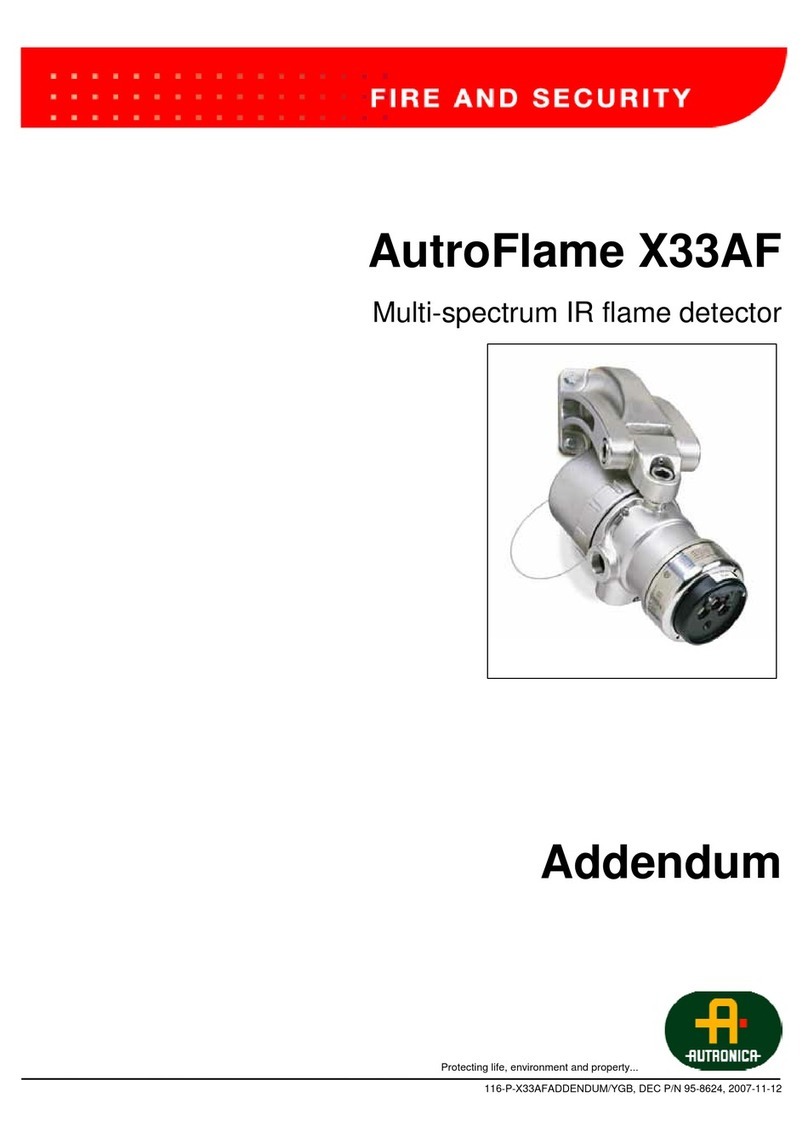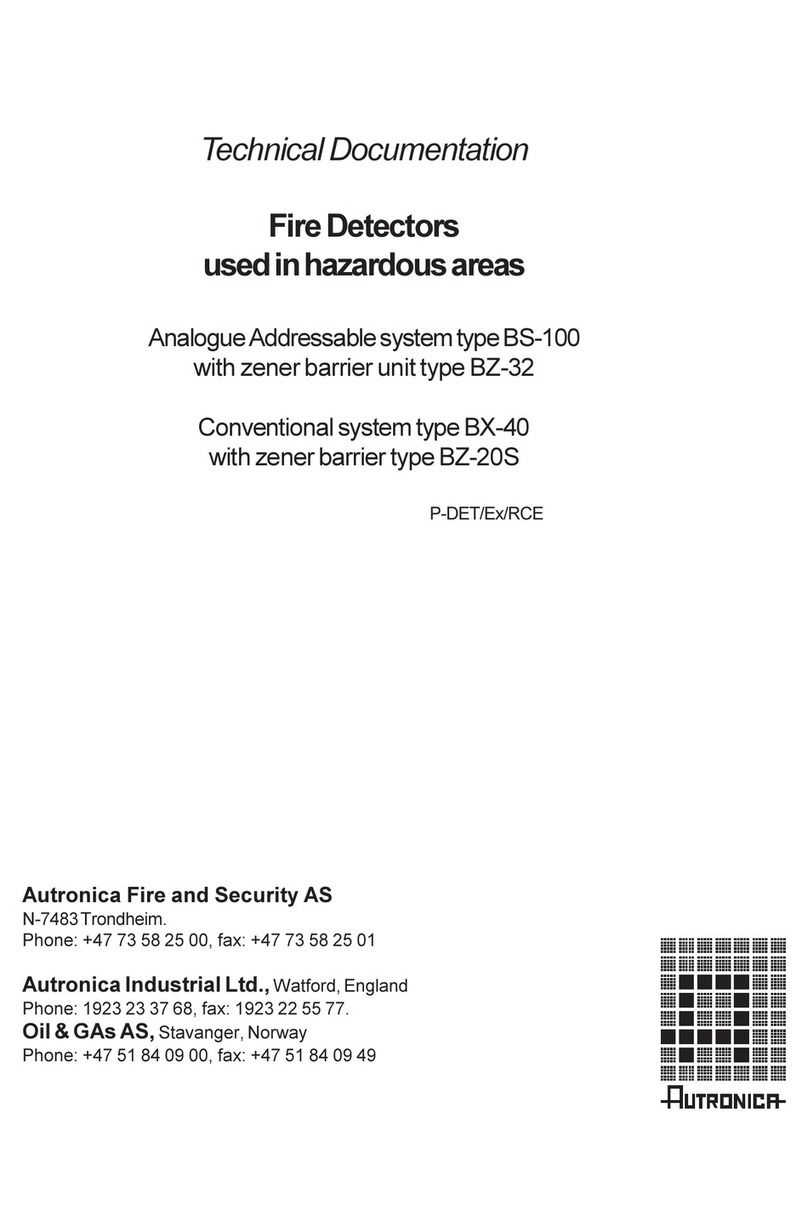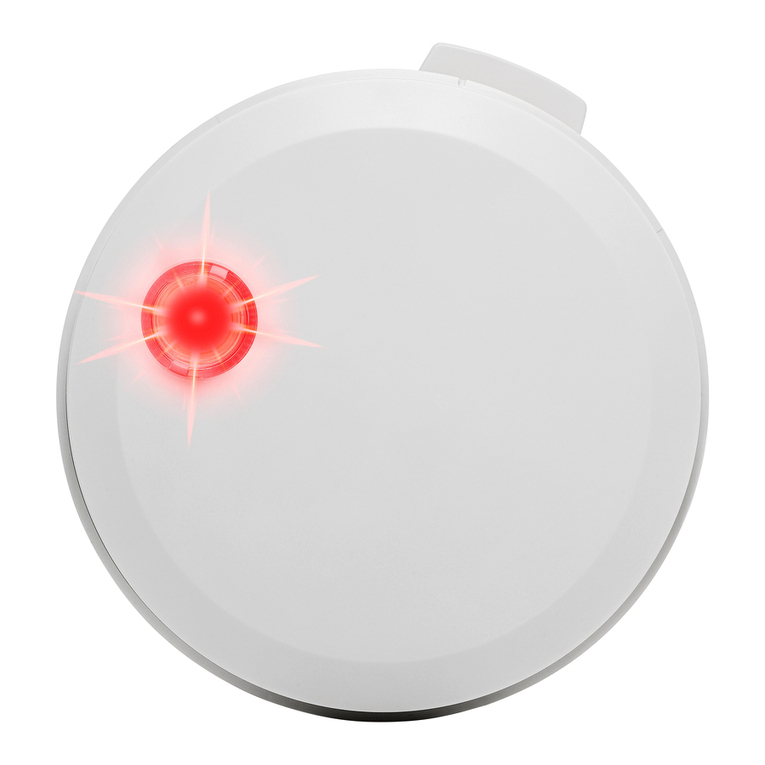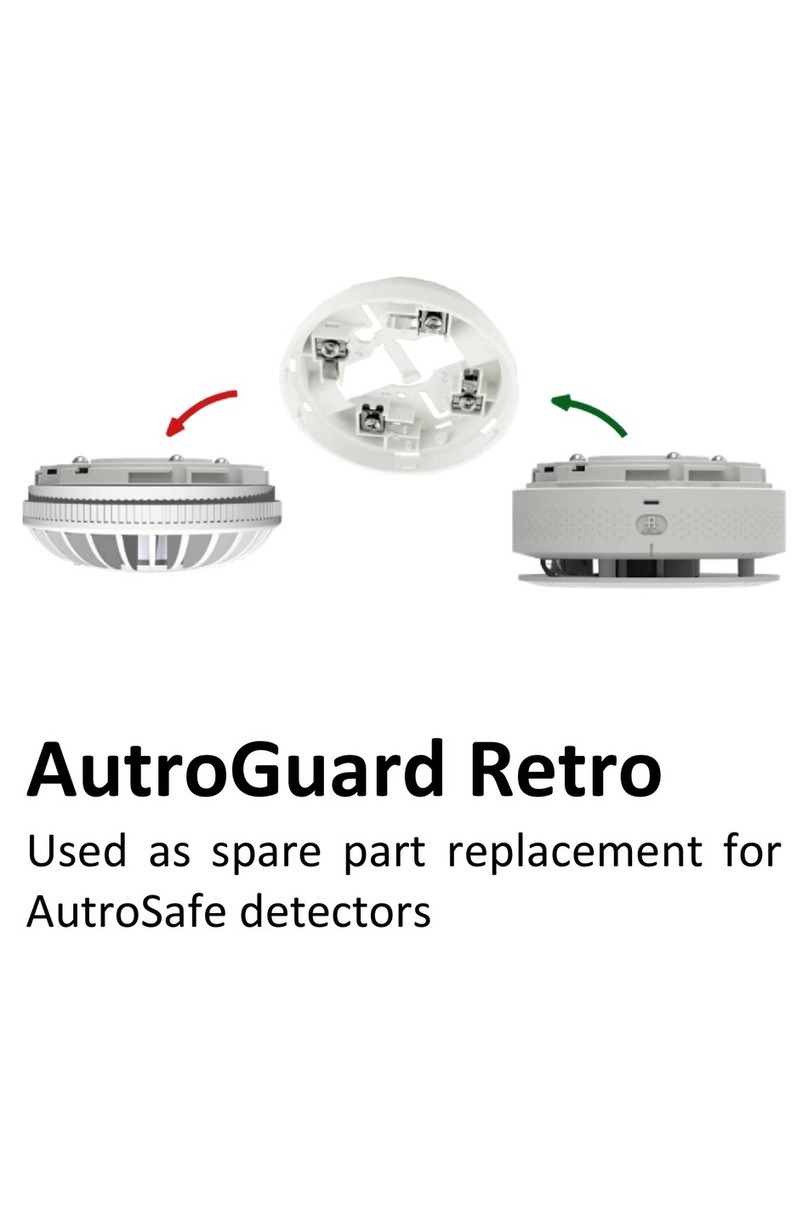
Instructions, AutroFlame X33AF, 116-P-X33AF/IGB, rev. E, 2013-08-13, P/N 95-8625-17.1, Rev: 2/13
Autronica Fire and Security AS
Page 4
GENERAL APPLICATION
INFORMATION
RESPONSE CHARACTERISTICS
Response is dependent on the detector's sensitivity
setting, distance, type of fuel, temperature of the fuel, and
time required for the re to come to equilibrium. As with
all re tests, results must be interpreted according to an
individual application.
See Appendix A for third-party approved re test results.
Additional re test results are available from Autronica.
IMPORTANT APPLICATION CONSIDERATIONS
In applying any type of sensing device as a re detector,
it is important to know of any conditions that can prevent
the device from responding to re, and also to know
what other sources besides re can cause the device to
respond.
Welding
Arc welding should not be performed within 40 feet
(12.2 m) of the detector congured to very high sensitivity,
within 10 feet (3.0 m) at medium sensitivity, within 5
feet (1.5 m) at T-Low sensitivity, or within 5 feet (1.5 m)
at Low sensitivity. It is recommended that the system be
bypassed during welding operations in situations where
the possibility of a false alarm cannot be tolerated. Gas
welding mandates system bypass, since the gas torch is
an actual re. Arc welding rods can contain organic binder
materials in the ux that burn during the welding operation
and are detectable by the X33AF. Welding rods with clay
binders do not burn and will not be detected by the X33AF.
However, system bypass is always recommended, since
the material being welded may be contaminated with
organic substances (paint, oil, etc.) that will burn and
possibly trigger the X33AF.
Articial Lighting
The X33AF should not be located within 3 feet (0.9 m) of
articial lights. Excess heating of the detector could occur
due to heat radiating from the lights.
EMI/RFI Interference
The X33AF is resistant to interference by EMI and RFI,
and is EMC Directive compliant. It will not respond to a 5
watt walkie-talkie at distances greater than 1 foot. Do not
operate a walkie-talkie within 1 foot of the X33AF.
Non-Carbon Fires
The X33AF is a multiple spectrum IR device with detection
limited to carbonaceous fuels. It should not be used to
detect res from fuels that do not contain carbon, such as
hydrogen, sulfur, and burning metals.
IMPORTANT SAFETY NOTES
WARNING
Do not open the detector assembly in a hazardous
area when power is applied. The detector contains
limited serviceable components and should never
be opened. Doing so could disturb critical optical
alignment and calibration parameters, possibly
causing serious damage.
CAUTION
The wiring procedures in this manual are intended
to ensure proper functioning of the device under
normal conditions. However, because of the
many variations in wiring codes and regulations,
total compliance to these ordinances cannot be
guaranteed. Be certain that all wiring complies
with the NEC as well as all local ordinances. If
in doubt, consult the authority having jurisdiction
before wiring the system. Installation must be
done by a properly trained person.
CAUTION
To prevent unwanted actuation or alarm,
extinguishing devices must be disabled prior to
performing system tests or maintenance.
CAUTION
The multispectrum IR ame detectors are to be
installed in places where the risk of mechanical
damages is low.
ATTENTION
Remove the protective cap from the front of the
detector before activating the system.
ATTENTION
Observe precautions for handling electrostatic
sensitive devices.

